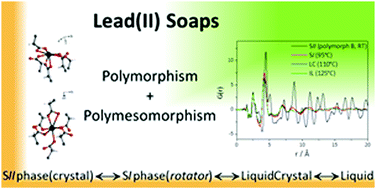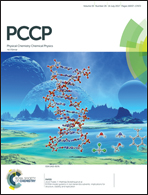Lead(ii) soaps: crystal structures, polymorphism, and solid and liquid mesophases†
Abstract
The long-chain members of the lead(II) alkanoate series or soaps, from octanoate to octadecanoate, have been thoroughly characterized by means of XRD, PDF analysis, DSC, FTIR, ssNMR and other techniques, in all their phases and mesophases. The crystal structures at room temperature of all of the members of the series are now solved, showing the existence of two polymorphic forms in the room temperature crystal phase, different to short and long-chain members. Only nonanoate and decanoate present both forms, and this polymorphism is proven to be monotropic. At higher temperature, these compounds present a solid mesophase, defined as rotator, a liquid crystal phase and a liquid phase, all of which have a similar local arrangement. Since some lead(II) soaps appear as degradation compounds in oil paintings, the solved crystal structures of lead(II) soaps can now be used as fingerprints for their detection using X-ray diffraction. Pair distribution function analysis on these compounds is very similar in the same phases and mesophases for the different members, showing the same short range order. This observation suggests that this technique could also be used in the detection of these compounds in disordered phases or in the initial stages of formation in paintings.

- This article is part of the themed collection: 2017 PCCP HOT Articles


 Please wait while we load your content...
Please wait while we load your content...